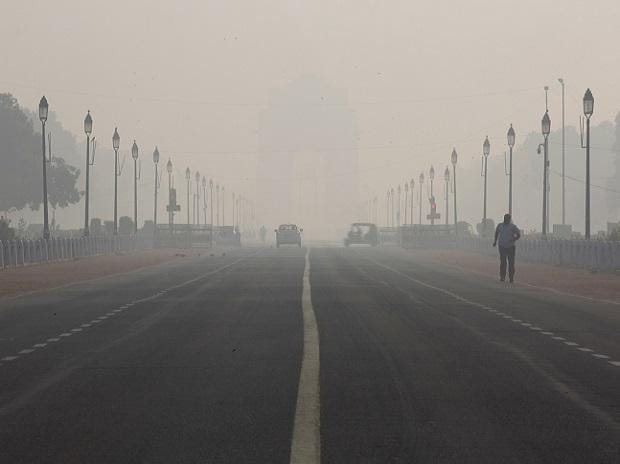Delhi experienced a cold day on Wednesday but it was not as chilly as the day before, according to the India Meteorological Department.
The night temperature dipped to 5.8 degrees Celsius, three notches below normal, as cold northwesterly winds swept the northern plains. The city's maximum temperature peaked at 16.4 degrees Celsius, six notches below the normal.
Palam, Narela and Jafarpur recorded a severe cold day -- their maximum temperature was at least 6.5 degrees below the normal.
It was also the third consecutive "cold day" in the national capital.
Delhi had seen the coldest January day in nine years on Tuesday, with the maximum temperature plunging 10 notches below the normal and settling at 12.1 degrees Celsius.
Before this, January 3, 2013, had experienced a maximum temperature of 9.8 degrees Celsius, according to India Meteorological Department (IMD) data.
The cold was so intense that all weather stations in Delhi recorded their maximum temperatures 10 degrees to 11 degrees Celsius below normal.
According to IMD, a "cold day" is when the minimum temperature is less than 10 degrees Celsius and the maximum is at least 4.5 degrees Celsius below the normal.
A "severe cold day" is when the maximum temperature is at least 6.5 notches below the normal.
According to IMD data, Delhi has recorded seven cold days in January so far, the highest in the month in at least a decade.
Senior IMD scientist R K Jenamani said Delhi has recorded a maximum temperature of less than 17 degrees Celsius on 12 days this month, the highest since 2003 which had seen 18 such days.
The maximum temperatures have been lower than normal since the second week of January. Minimum temperatures have been close to or above normal.
This is largely due to fog and low clouds preventing long exposure to the sun. There have been seven western disturbances in Delhi this January as against a normal of three to four in the month.
Rains due to the western disturbances increased moisture in the air which led to foggy conditions amid low temperatures on most of the days.
(Only the headline and picture of this report may have been reworked by the Business Standard staff; the rest of the content is auto-generated from a syndicated feed.)
 Dear Reader,
Dear Reader,
Business Standard has always strived hard to provide up-to-date information and commentary on developments that are of interest to you and have wider political and economic implications for the country and the world. Your encouragement and constant feedback on how to improve our offering have only made our resolve and commitment to these ideals stronger. Even during these difficult times arising out of Covid-19, we continue to remain committed to keeping you informed and updated with credible news, authoritative views and incisive commentary on topical issues of relevance.
We, however, have a request.
As we battle the economic impact of the pandemic, we need your support even more, so that we can continue to offer you more quality content. Our subscription model has seen an encouraging response from many of you, who have subscribed to our online content. More subscription to our online content can only help us achieve the goals of offering you even better and more relevant content. We believe in free, fair and credible journalism. Your support through more subscriptions can help us practise the journalism to which we are committed.
Support quality journalism and subscribe to Business Standard.
Digital Editor

RECOMMENDED FOR YOU